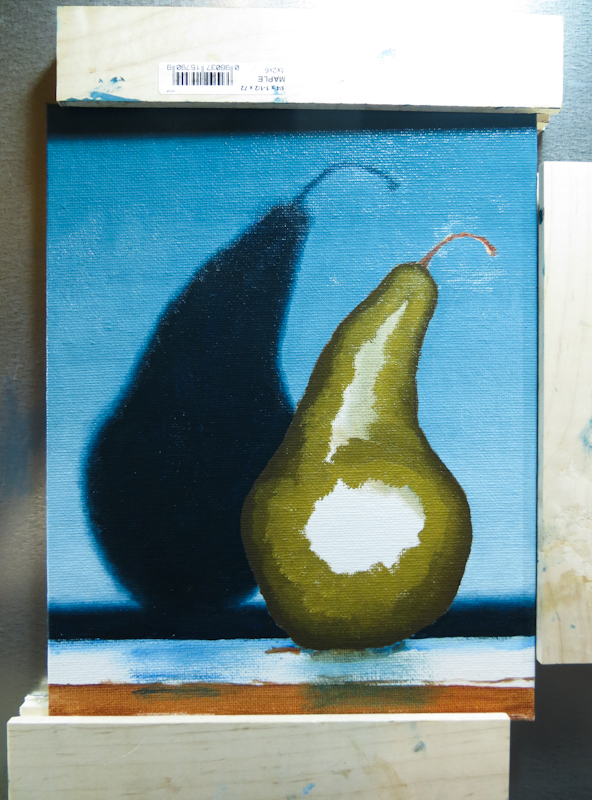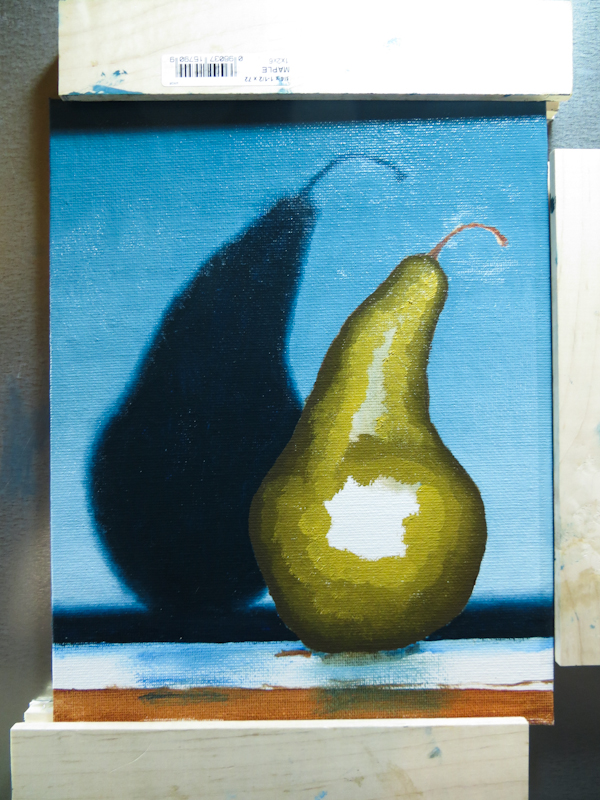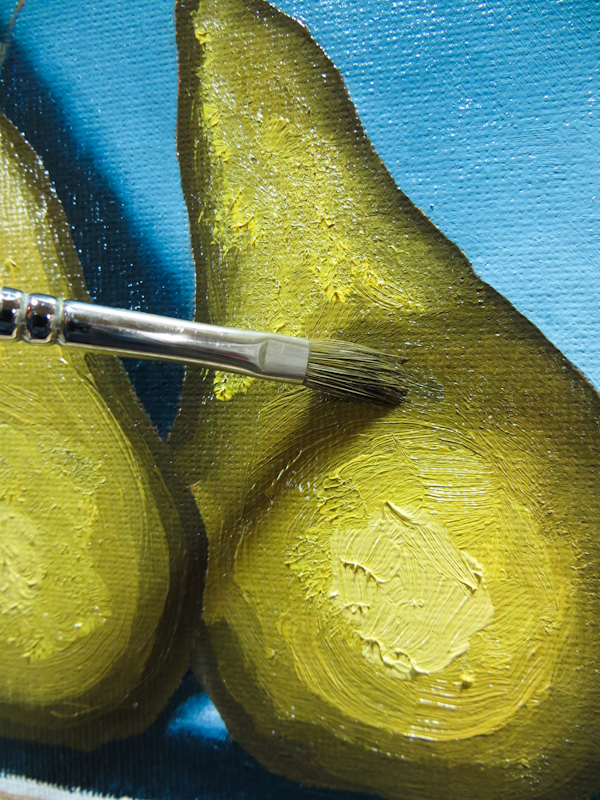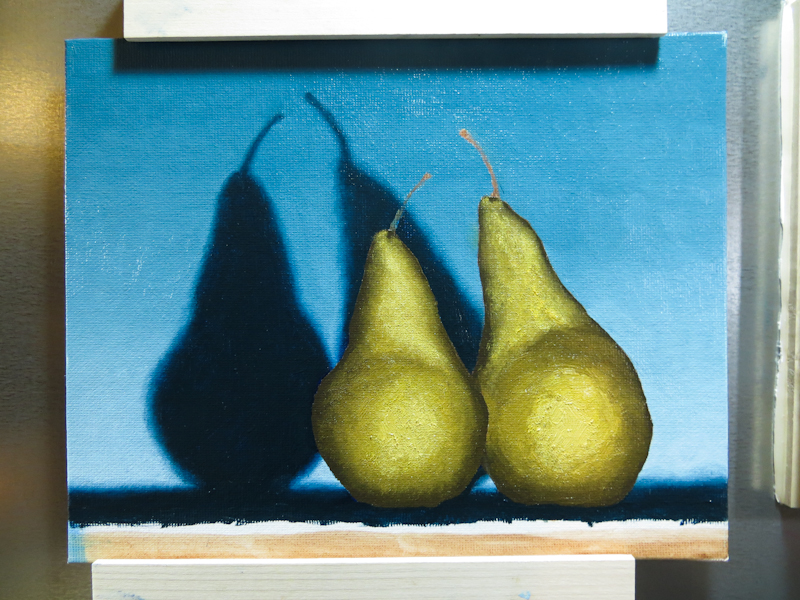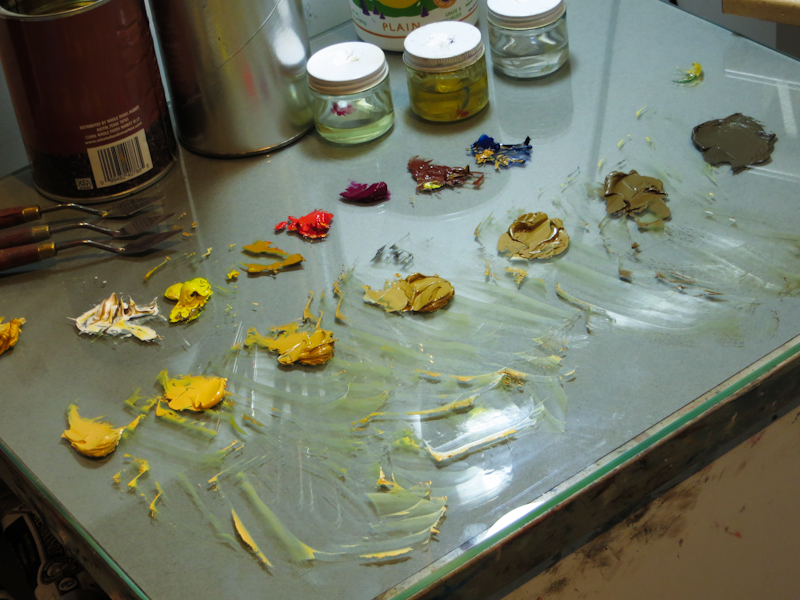
The string for the pears is made up of Cadmium Yellow Light, desaturated and darkened with Burnt Sienna and French Ultramarine. The lightest two steps also use Titanium White and Cadmium Red.
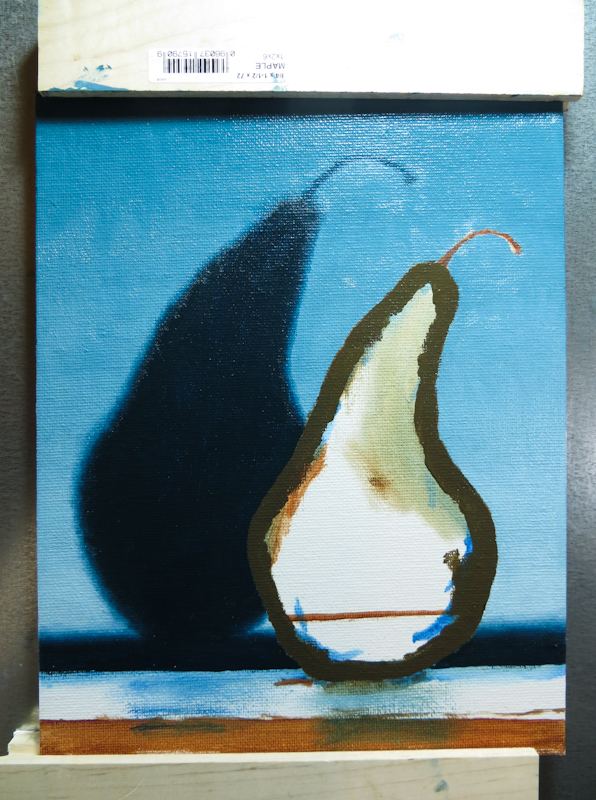
Here I’m working from the darkest step into the light. Since the pear it lit from the front, the darkest darks are around the perimeter.
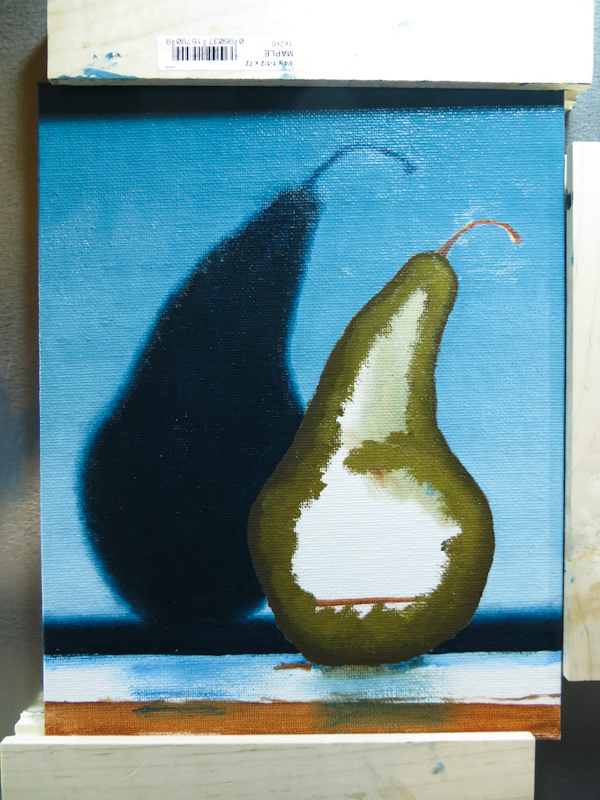
At this point the values can be deceiving with the darks appearing much darker than they should be. It is important to stick with the plan until all of the steps can be seen in context.
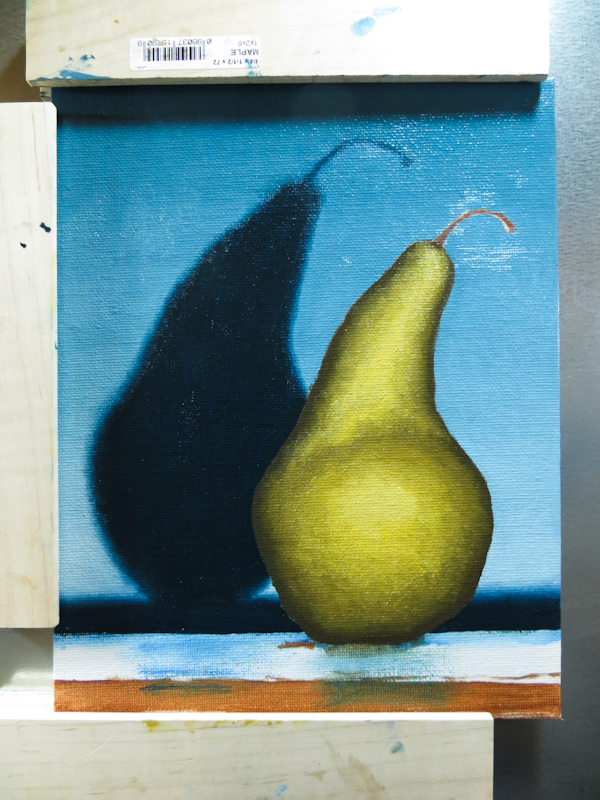
The pear after smoothing. My technique was to first smooth the gradient, using a bristle brush that was wiped clean every few strokes. Then I adjusted the form by alternately dabbing on bits of paint from two bristle brushes, one for darks and one for lights. I would tend to hold the brush perpendicular to the canvas and let the bristles splay a bit in order to get a nice texture. I found it was helpful to alternate between light and dark, working over the entire surface of the pear, instead of focusing on any single area.

